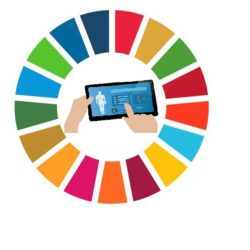
How the SDGs and Digital Health Will Make the World Healthier

There are aspects of our lives that should always be at the forefront of our minds and should be supported by the strongest and most up-to-date technology possible. Health and healthcare is a major example of this, as (let’s face it) we can’t do anything if our bodies aren’t maintained properly and we want what’s best for ourselves.
With digital health we have now entered into a new stage of health care, radically changing (we’re hoping in a good way) how our treatment and care is delivered to us.
This is not only good news for patients. It’s also great news for doctors.
Here’s how digital health is going to change how you interact with the medical system and how the system interacts with you.
For much of our lives we’ve had a routine relationship with our doctors. You feel ill, you go in and see a doctor, s/he hears your symptoms, checks your vitals and writes you a prescription, you hand it in at the pharmacy, then go back later and pick up your pills.
Is this actually the best way to deal with your health?
Overprescription and overmedication is becoming more of a known presence in the world today, mainly because of the opioid crisis. The cause for this is likely a combination of things—inadequate pain management training, pressure from patients, pressure from society, pressure from pharmaceutical companies—but it is something that needs to fixed.
But what’s the better way?
Xealth offers an interesting alternative, providing doctors with a way to prescribe digital health tools instead of (or on top of) medications. So if instead of a pill the patient just needs to pay closer attention to their diet the doctor can prescribe an app that allows them the chance to track their eating habits.
This is a much needed system, as overprescription creates numerous problems and can cause the patients to be much more of a weight on the health care system.
Platforms like Xealth with definitely help with the push to reach Sustainable Development Goal 3 (Ensure healthy lives and promote wellbeing for all at all ages) and will help all of us feel a better connection with our bodies.
Another way digital health is going to improve our health care system is by creating new ways to offer care to marginalized groups in our society.
Consider the homeless population in this country. As it currently stands they struggle with obtaining proper access to health services for many reasons including lack of a health card, lack of a family doctor or just plain discrimination. This in turn puts an added strain on ER services as this is where homeless Canadians end up seeking medical attention. Obviously this is not quality care for anyone.
TELUS Health is looking to solve the problem via Mobile Health Clinics.
This Health for Good™ program uses modern technology like electronic medical records (#EMR) to ensure the care offered is safe, secure and top of the line.
These “clinics on wheels” can move to where they are needed, in turn bringing care to vulnerable segments of society who can’t necessarily access conventional services.
This is obviously a route we should be exploring. In this amazing country everyone should have access to healthcare.
Digital health will not just improve health care in wealthier countries. In fact, it will prove to be a key player in improving the way health care is delivered the world over.
UNICEF knows this and is exploring the use of modern technology to better the health of the youth. Working with all the important connections (community leaders, health agencies and governments) UNICEF is aiming to improve health by increasing the presence of information and communication technology (ICT) and creating more in the way of coordination between the various levels.
UNICEF’s main goals are to reduce infant and child mortality rates and promote the overall health and development of children worldwide. This, obviously, is a goal we all should jump to support and is a good example of the power and potential found in both the SDGs and digital health.
Digital health will not just improve health care in wealthier countries. In fact, it will prove to be a key player in improving the way health care is delivered the world over.
UNICEF knows this and is exploring the use of modern technology to better the health of the youth. Working with all the important connections (community leaders, health agencies and governments) UNICEF is aiming to improve health by increasing the presence of information and communication technology (ICT) and creating more in the way of coordination between the various levels.
UNICEF’s main goals are to reduce infant and child mortality rates and promote the overall health and development of children worldwide. This, obviously, is a goal we all should jump to support and is a good example of the power and potential found in both the SDGs and digital health.
A common refrain is “I wish you good health” and there are reasons for this. A healthy world is a happy and productive world. Thanks to advancements brought in my technology we now have the power to dramatically improve world health and this is amazing.
Digital health will change how you (and everyone else) interact with the medical field and we should all be happy for this.

